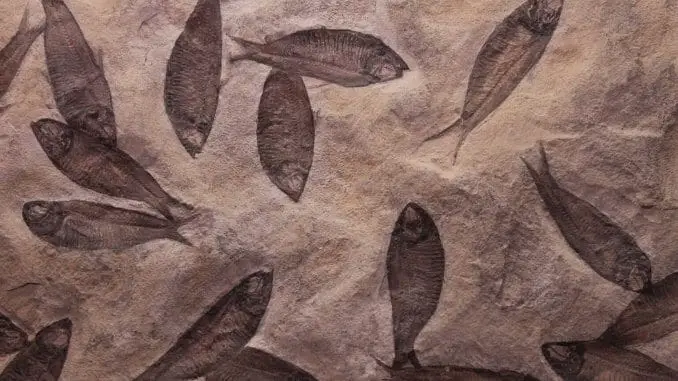
The evolution of fish may not sound as interesting to you as the evolution of mankind, or the evolution of the dinosaur, until you realize that if it weren’t for the evolution of fish, dinosaurs and mankind would never have existed.
Fish were the first vertebrates on the planet and provided the basic shape and body for millions of species and millions of years of evolution.
They have adapted countless time along the years, surviving mass extinctions and major changes to the climate and earths structure.
This article is going to take a look at how fish have developed through all the different periods of time starting off in the Cambrian Period (490-540 Million Years Ago).
Embed Code
<a href="https://www.fishkeepingworld.com/evolution-of-fish/"><img src="https://www.fishkeepingworld.com/wp-content/uploads/2018/08/The-Evolution-of-Fish-Full.jpg" alt="History of Fish Infographic" width="1200" height="5716" /></a><br /> Provided by - <a href="https://www.fishkeepingworld.com/">Fishkeeping World</a>
The First Fish (Cambrian Period)
| ERA | PERIOD | MILION YEARS AGO |
|---|---|---|
| Palaeozoic | Cambrian | 490-540 |
The Cambrian Explosion is believed to represent the most important evolutionary event in the history of life on Earth. This ‘explosion’ took place over millions of years, starting around 542 million years ago.
It is so important to those that study paleontology, and more specificallypaleoichthyology(the study of prehistoric fish), becausethat period is when all the major animal body plans appeared. The Cambrian period gave us the first fossils, which are still being found and studied today.
Early ‘fish’ look nothing like the fish we know today. They did not yet have jaws, or vertebrae. These fish are known as Agnatha, meaning fish without jaws, however they still had mouths and were able to eat.
Many were small worm-like creatures; others evolved bony plates of armor to protect themselves.
It was in the late Cambrian period, that eel-like jawless fish such as the Conodonts appeared along with other small armored fish known as Ostracoderms.
Conodonts ranged from 1cm to 40cm in length, they had large eyes, fins, v-shaped muscles and a notochord (a flexible rod, similar to cartilage, running through the body which provided support).
Throughout the 100 million years of the existence of Ostracoderms, there were around 600 species. They were typically less than 12 inches long. Unlike earlier fish, they had developed to use their gills exclusively for breathing. Earlier ‘fish’ used gills for both breathing and feeding.
The majority of jawless fish are now extinct as they failed to adapt to new conditions, however there are a few which still exist in the Cyclostomata family (the hagfish and the lampreys).
Lampreys give us a good indication of what ancient pre-jawed fish would have looked like.
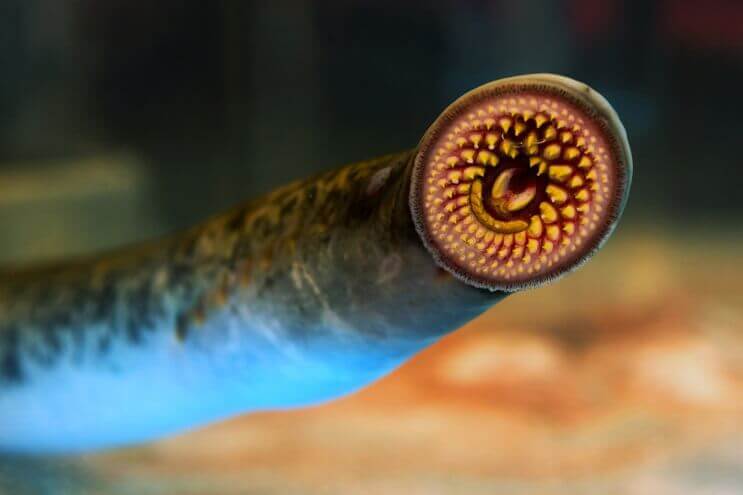
The Evolution of the Vertebrate
Fish are thought to be the first vertebrates on the planet. The evolution of the backbone was crucial for mammals, fish, birds, reptiles and amphibians.
It was generally accepted that evidence of the first backbone was around 500 million years ago, during the Ordovician period.
But how exactly did the vertebrate develop?
During the Cambrian period, the first fish-like creatures (although definitely not recognized as true fish by paleontologists) appeared, around 530 million years ago.
The Pikaia, which looked more like a worm than a fish, is perhaps the earliest ancestor of fish.
It was a primitive chrodate (an animal which possesses a notochord for at least one period of their life) that swam like an eel.
The Pikaia had four vital components which would go on to evolve into a true fish; a head (an obvious head, separate from the tail), bilateral symmetry (the same shape on either side of the body), v-shaped muscles and a nerve cord running down the length of its body.
The cord was not protected by a bone or tube and so therefore Pikaia was technically a ‘chordate’, not a vertebrate – but it did lay the foundations for future vertebrates.
Some experts consider the Haikouichthys, or theMyllokunmingia, to be the earliest true fish; however this is disputed due to a lack of definitive fossil record.
It is possible that there were other fish-like creatures that predate these ‘first-fish’ however no earlier fossil remains have been found.
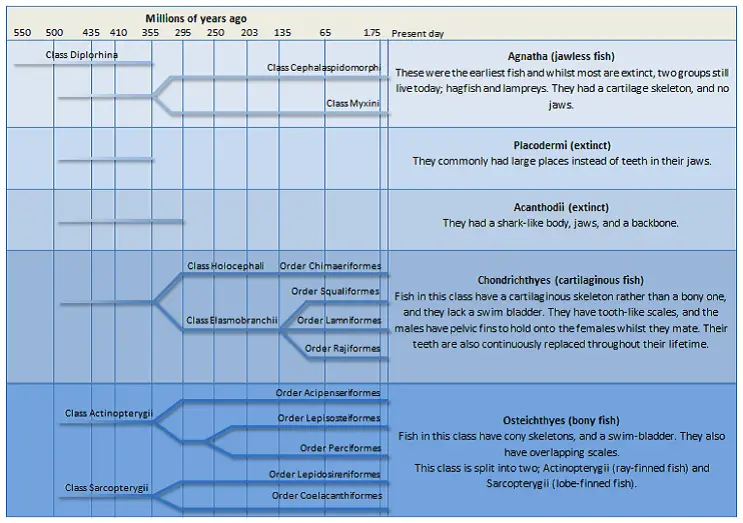
The First Signs of a Jaw (Ordovician Period)
| ERA | PERIOD | MILION YEARS AGO |
|---|---|---|
| Palaeozoic | Ordovician | 443-488 |
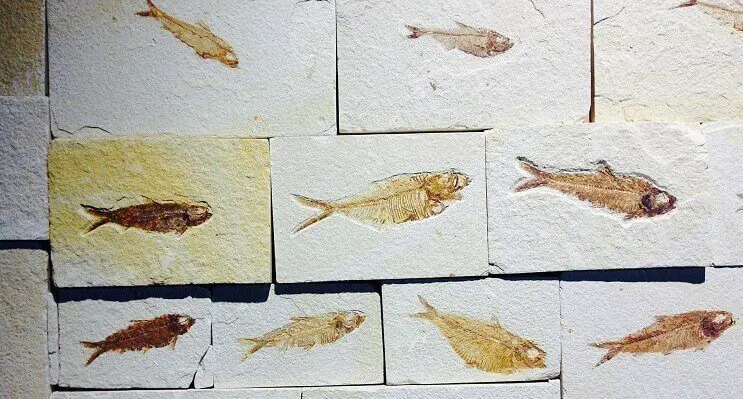
Without a doubt by the Ordovician Period, the vertebrate had well and truly formed and was present in many fish. Fish were also diversifying in shape, length, and size. However, fish had still not yet developed jaws.
Fish lacked a lower jaw. So they couldn’t consume large prey. Instead, they most likely would have fed by sucking water and debris through their mouths from the seabed and releasing the waste and water through their gills.
Many jawless fish also had a second characteristic – they have bony armored plates. Examples of these fish include the Astraspis and the Arandaspis. Essentially, they looked like giant 6-inch tadpoles. They had no fins and poor mobility.
These species further evolved during the Silurian period to have a forked tail which gave them more maneuverability. They diversified throughout the Devonian period, but by the end of the Permian period had fallen into extinction.
It’s likely that the first jawed fish developed in the late Ordovician/early Silurian period.
The Jaw Further Evolved (Silurian Period)
| ERA | PERIOD | MILION YEARS AGO |
|---|---|---|
| Palaeozoic | Silurian | 416-443 |
Towards the end of the Ordovician and during the beginning of the Silurian period, Earth experienced a colossal extinction – the second largest in the extinction events, wiping out 70% of species.
Prior to this period, all fish had been jawless, the first signs of a jaw were found in this period.
Jaws are first recorded in the Silurian period, where fossil records found two groups of fish: Placoderms and Acanthodii.
The Placoderms evolved from Ostracoderms and the Acanthodii were spiny shark like fish.
Their jaws are thought to have evolved from the anterior pharyngeal arches (gill arches). It was also thought that the jaws developed to assist breathing rather than for eating.
Over time, jaws became more intricate and complex.
Cartilaginous fish (Chondrichthyes) and bony fish (Osteichthyes) also developed in the late Silurian period.
The introduction of both cartilaginous and bony fish brought a huge diversification to the sea, and fish of many different shapes and sizes began to take over the waters.
The Age of the Fish (Devonian Period)
| ERA | PERIOD | MILION YEARS AGO |
|---|---|---|
| Palaeozoic | Devonian | 358-419 |
In the Devonian period (also known as the ‘age of fishes’) a huge variety of fish started to evolve and develop.
Placoderms dominated the waters in this period; however Chondrichthyes (including sharks and rays) were more agile and outclassed them. Because of this towards the end of this period, Ostracoderms and Placoderms were extinct.
Osteichthyes (fish with bony skeletons) evolved into two groups – ray finned fish (Actinopterygii) and lobe-finned species (Sarcopterygii).
From lobe-finned fish, tetrapods evolved (vertebrates with true legs); they are the ancestors to land-dwelling vertebrates, including us humans.
Ray-finned fish continued to evolve and develop new species and are now the most diverse and numerous vertebrates on the Planet.
Mass Fish Extinction (Carboniferous and Permian Periods)
| ERA | PERIOD | MILION YEARS AGO |
| Palaeozoic | Permian | 251-299 |
| Carboniferous | 299-359 |
The Permian period ended with the Permian-Triassic extinction event; the largest mass extinction in Earth’s history. Approximately 96% of marine species were completely wiped out.
The Bony Fish Triumph (Mesozoic Era)
| ERA | PERIOD | MILION YEARS AGO |
| Mesozoic | Cretaceous | 65-145 |
| Jurassic | 145-199 | |
| Triassic | 199-251 |
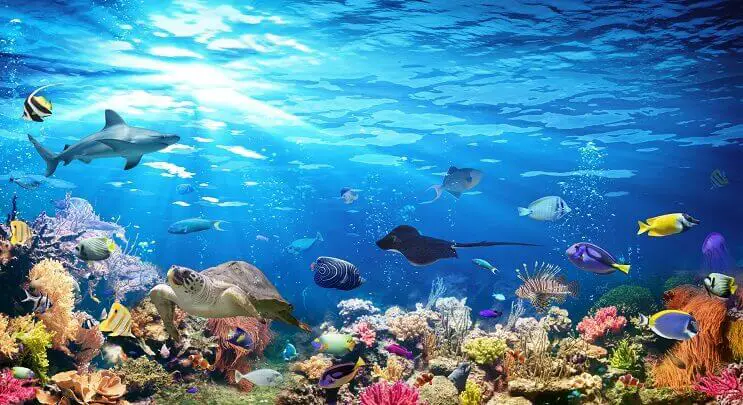
It was bony fish that were able to recover and diversify after this catastrophic event. Also known as the age of the reptiles, this era was famous for the evolution of dinosaurs.
Alongside the evolution of dinosaurs, fish continued to evolve; there are plenty of fossils to be seen from this period.
Fish Continue to Diversify (Cenozoic Era)
| ERA | PERIOD | MILION YEARS AGO |
| Cenozoic | Quaternary | Present-2 |
| Tertiary | 2-65 |
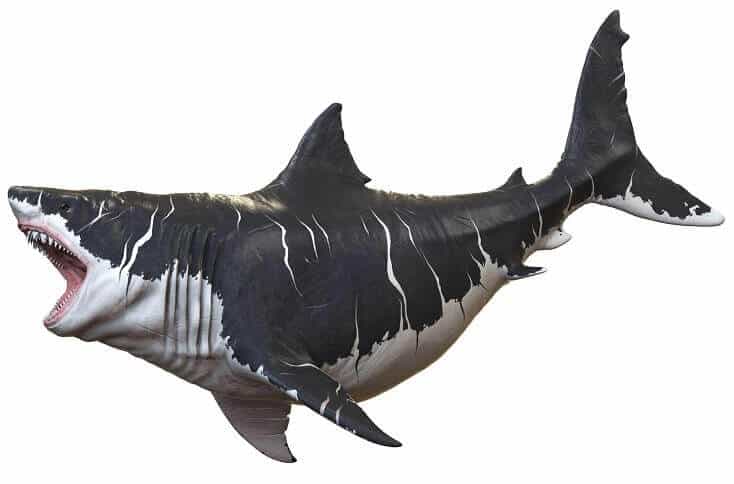
This brings us to the present day era, which spans from 65 million years ago to the present.
During this time, the Megalodon has come and gone; The Megalodon was a larger version of the great white shark. Fossil records show this giant reached lengths of 67 foot, and fed on large whales. 3D models of the fish also suggest it had more biting force than a T-rex.
Despite huge monsters like this, and the many species of fish that went extinct, there are now about 32,000 species of fish and they represent over half of all living vertebrates.
They have adapted to inhabit wide ranges of waters, from depths as low as 36,000ft in the Challenger Deep, to the Amazon rainforest where they’ve learnt to adapt with ever changing water conditions.
Summary
The fish that we know now are the result of thousands of evolutionary changes over millions of years.
Starting with no vertebrate and no jaw, these incredible creatures changed and adapted to become better predators and survivors, and create thousands of species of fish.
We hope this has given you an initial insight into just how fascinating the evolution of fish is. From small worm-like creatures with now jaw or back-bone, to the vast variety of fish we now see in our oceans, lakes and rivers.
Given the amount of extinctions that took place, it’s a miracle that there are so many species alive today.


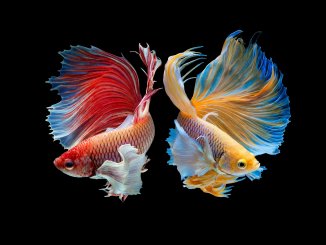
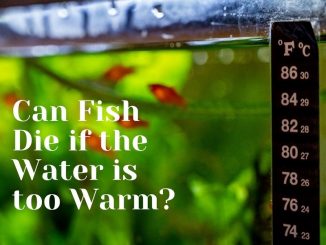
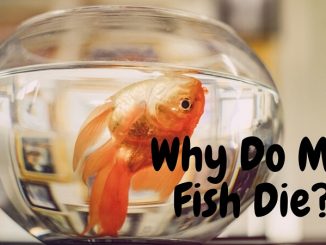


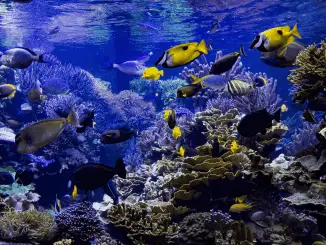
This is a great graphic, and such a great subject. I love that it is clear and
I have a nitpick though. “the most important evolutionary event in the history of life on earth” has got to be either the transition from rna to dna, the transition from anaerobic to aerobic or the transition from prokaryotic to eukaryotic. That is, unless we are just talking about the fossil records, or just about vertibrates, in which case, yeah, the Cambrian is pretty significant. As much life is evolved from fishes though, or from comb jellies if you want to go back a step further, most life, by volume, species count, or number of organisms has a last common ancestor with humans that precedes the Cambrian and survive just fine without the specific adaptations our ancestors gained then.
During the ice age 10,000 years ago glaciers moved south covering northern USA and scouring the landscape as it advanced. Eventually the ice receded leaving thousands of lakes in the scoured ground not connected by rivers. Question: How did all these lakes get populated with several species of fish? Did these fish evolve naturally in each lake? Or was their human intervention or what?